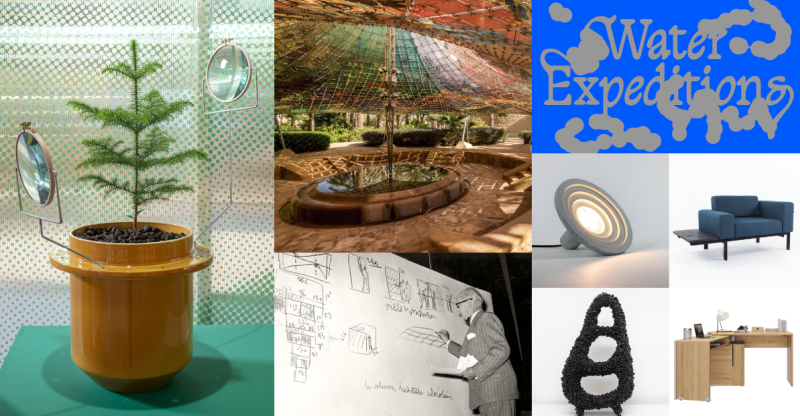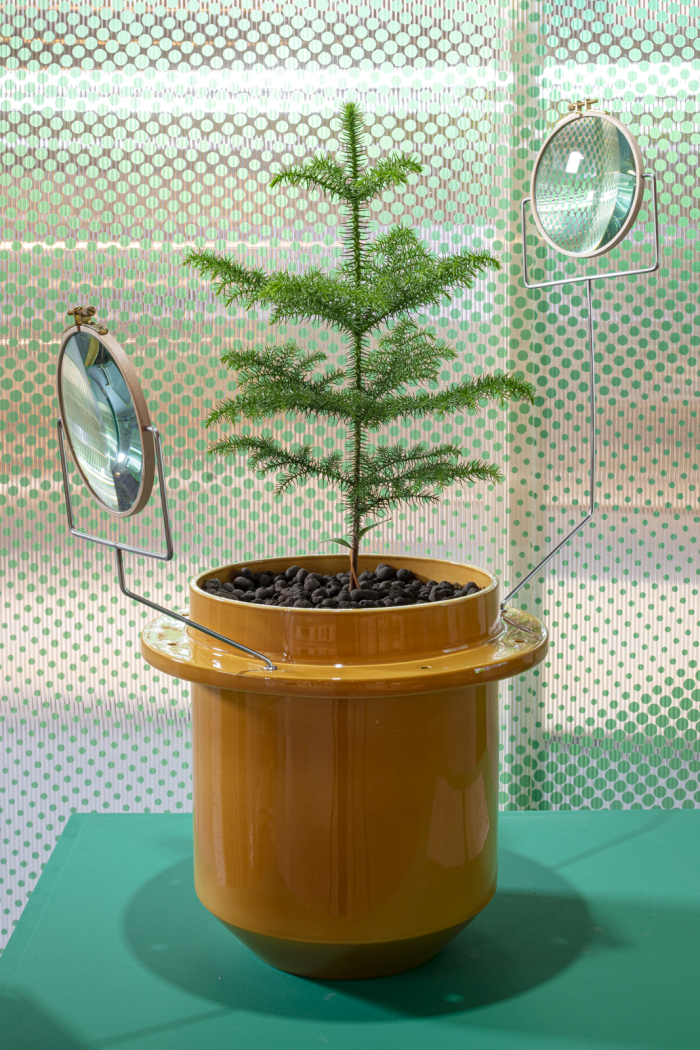5 New Architecture & Design Exhibitions for April 2023
Although the etymology of “April” is lost in the mists of time, one of the more likely, and more satisfying, theories as to its origins is to be found in the Latin verb aperire, to open, which itself can be considered as being, possibly, related to the ancient Greek ἄνοιξις, ánoixis, opening. And thus the very obvious connotations to spring springing forth in April, to the natural world opening for another season.
What is much better recorded are the new architecture and design exhibitions apertio and ἄνοιξις in April 2023. Springing forth in April 2023.
Our five recommendations from those many new springtime blooms can be found in Zürich, Weil am Rhein, Paris, Hasselt and Dresden…….
“The Modulor — Measure and Proportion” at Pavillon Le Corbusier, Zürich, Switzerland
Although first published in 1950 Le Corbusier’s Le Modulor, his scale of proportions based on the Golden Ratio developed as a basis for, as a tool for, designing buildings and their interiors responsive to and meaningful for humans, was the result of not only a great many years research and consideration by Le Corbusier, research that saw numerous changes to the basic, idealised, human body from which everything else is and was abstracted, but also arose from positions to proportions and dimensions that Le Corbusier had developed in the earliest days of his career in his native La Chaux-de-Fonds.
A journey to Le Modulor that the Pavillon Le Corbusier, Zürich, aim to sketch and elucidate in their 2023 exhibtion The Modulor — Measure and Proportion via a presentation of, and amongst others exhibits: natural objects, including seashells and plants in which the Golden Ratio can be measured; of historical proposals for a scale of human proportions, that chain in which Le Modulor is a link; and also a documentation of Le Corbusier’s research and considerations, the workings that led to the 1950 publication.
And a presentation continued beyond Le Modulor into examples of, and discussions on, how Le Corbusier used Le Modular himself, which he did, frequently, including in context of projects as diverse as, for example, l’Unité d’Habitation in Marseille, the La Tourette convent near Éveux, the Claude et Duval textile factory in Saint-Dié, in his conception of the new city Chandigarh, India, and also in and for the Pavillon Le Corbusier: Le Corbusier’s last architectural work, a work created under the initiative of the Zürich gallerist Heidi Weber, who was also responsible for organising the first re-editions of Le Corbusier, Pierre Jeanneret and Charlotte Perriand’s metal furniture, and a Pavillon Le Corbusier that is thus not only hosting The Modulor — Measure and Proportion but is also one of the exhibits. Is a space to be explored in context of the exhibtion and which thus should allow one to gain a fresh perspective on the building.
And a fresh perspective on Le Corbusier, a man, as we’ve oft noted, whose popular association with concrete, quadrats and reduction, and through his, invariable, portrayal in photographs with a severe, dour, expression, framed by his severe, dour, round glasses, leads to a popular understanding of Le Corbusier that often shrouds and distracts from many of the more interesting and informative aspects of his work, his positions, his approaches and thus his contemporary relevance.
The Modulor — Measure and Proportion is scheduled to open at Pavillon Le Corbusier, Höschgasse 8, 8008 Zürich on Friday April 21st and run until Sunday November 26th. Further details can be found at https://pavillon-le-corbusier.ch
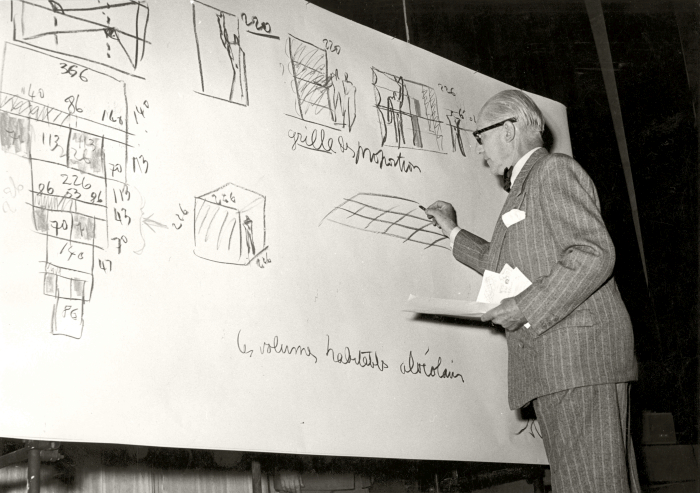
Le Corbusier illustrates his lecture “Proportions et temps modernes”, Milano 28th September 1951, part of The Modulor – Measure and Proportion, Pavillon Le Corbusier, Zürich (Photo Fondation Le Corbusier, Paris courtesy Museum für Gestaltung, Zürich)
“Hot Cities: Lessons from Arab Architecture” at the Vitra Design Museum Gallery, Weil am Rhein
As the global climate gets ever warmer not only will changes occur to the natural environment in Europe, but also the built environment in Europe will change. Must change. And although here in Europe we all like to believe that we always have all the best answers to all the challenges, just occasionally, very occasionally, it can be worth trying to learn from non-Europeans. Specifically in context of our coming hot cities to try to learn from those with experience of living in cities at temperatures that we in Europe will experience in the coming decades. Who knows what we could learn?
Curated by Ahmed and Rashid Bin Shabib Hot Cities: Lessons from Arab Architecture promises to offer insights into architectural and urban planning examples from 20 cities in, for want of a better phrase, the Arab-speaking world; examples, projects, via which the curators aim not to only explain how contemporary technology and understandings can help, and historically has helped, make daily life bearable at extreme temperatures, nor only discuss the ongoing contribution traditional vernacular solutions can make in our contemporary high-tech societies, but also aim to underscore the importance of learning from history, that other lesson we humans, all humans, are really, really bad at comprehending and achieving. And in doing so should make an important, and timeous, contribution to the necessary, urgent, discourse about the future of the European urban environment.
In which context it it will also be very interesting to see in how far Hot Cities links in with, compliments and expands, Garden Futures. Designing with Nature in the main Vitra Design Museum Gehry building; for gardens, trees, plants et al will, arguably, play an important role in any and all solutions for our future, hot, urban spaces.
Hot Cities: Lessons from Arab Architecture is scheduled to open at the Vitra Design Museum Gallery, Charles-Eames-Str. 2, 79576 Weil am Rhein on Saturday April 29th and run until Sunday November 5th. Further details can be found at www.design-museum.de
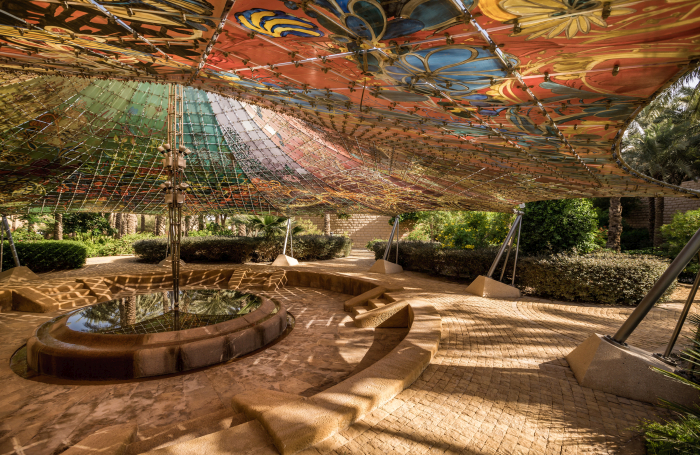
Tuwaiq Palace, Riyadh, Saudi Arabia, part of Hot Cities: Lessons from Arab Architecture, Vitra Design Museum Gallery, Weil am Rhein (Photo Rashid & Ahmed Bin Shabib, courtesy Vitra Design Museum)
“Design × Durable × Désirable – The Art of Living Responsibly” at Le French Design Galerie, Paris, France
The platform Valorisation de l’innovation dans l’ameublement, VIA, was established in 1979 by the, then, French government as place of exchange between designers and the French furniture industry, and over the decades since its founding has played an important role in not only helping numerous young French designers, and young French brands, get started and become established, but also in promoting French furniture design in France and abroad.
In 2018 Le French Design by VIA, as the institution is now know, instigated considerations on France, and living in France, in the year 2059, and which, amongst other topics, identified a need for what they refer to as a Disruption vers un design durable, a Disruption towards sustainable design, a need to make design, primarily furniture and interior design, more sustainable and responsible, not just environmentally but also socially; and which resulted in a publication with 100 examples of contemporary French furniture, furnishings and lighting design by way of initiating and advancing a discussion on the challenges and possible paths to possible solutions.
100 projects in a publication to be represented in Design × Durable × Désirable by 30 of those projects in a presentation format which follows the five chapters of that publication: New Models, with its focus on how furniture is made and distributed; Innovative Processes, with its focus on materials and technology; Conquering Territory, with its focus on locality, not just in terms of production but know-how; Future Uses, with its focus on our relationships with the objects with which we surround ourself; and Creative Visions, with its focus on nature as an influence and source of information for furniture designers, that topic discussed at length in Mimesis. A Living Design at the Centre Pompidou-Metz.
And thus a presentation which should offer not only varied and various insights into how the furniture industry and furniture designers can improve the sustainability of our furniture and our interiors and our communities, but also help underscore that it is possible. And will become increasingly possible.
While in addition to its insights into furniture and sustainability, Design × Durable × Désirable should also allow for some interesting insights into contemporary design from France, including brief introductions to the work and approaches and positions of a coming generation of French designers.
Design × Durable × Désirable – The Art of Living Responsibly opened at Le French Design Galerie, 120 avenue Ledru-Rollin, 75011 Paris on Wednesday March 29th and is scheduled to run until Thursday July 13th. Further details can be found at www.lefrenchdesign.org
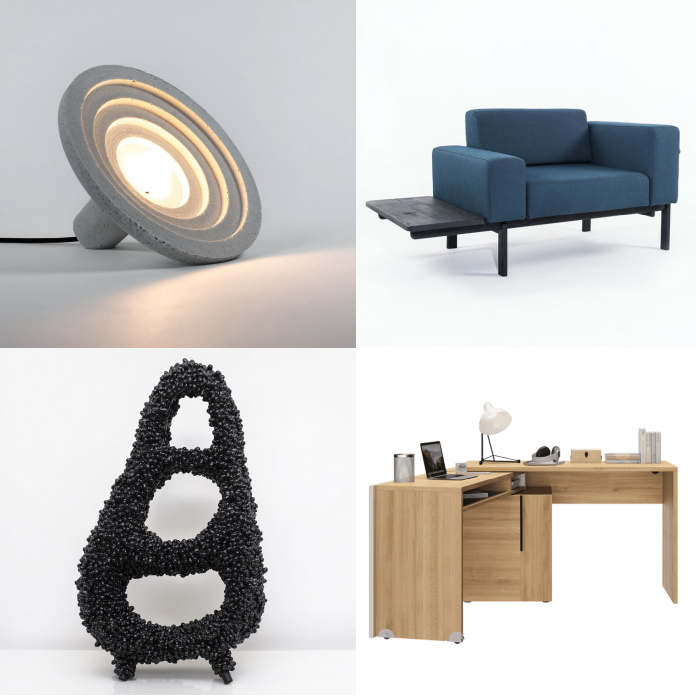
Some of the works included in Design × Durable × Désirable. The Art of Living Responsibly, Le French Design Galerie, Paris
“FORMAT 2023: Water Expeditions” at Z33, Hasselt, Belgium
FORMAT is the annual mentoring programme of Hasselt based art, architecture and design centre Z33, a platform which offers a supportive space for recent architecture and design graduates to develop their practice and positions through participation in a year long project, and which ends with a group exhibition.
FORMAT 2023 took as its theme one of the, inarguably, more important contemporary topics for global humanity, water, a theme the seven laureates approached from varied and various perspectives and which has resulted in an exhibtion that promises a mix of conceptual, speculative, theoretical and practical projects covering topics such as, for example, increasing the efficiency with which water is used, questions of the ownership of water, or questions of our relationships with water past, present and future, projects which consider water as more than just a liquid, and which as such should allow for differentiated perspectives on that resource which, like no other, defines all life on earth. Yet which today is endangered like no other. With all the inevitable consequences.
Differentiated perspectives, an understanding of water as more than just a liquid, that should be expanded and deepened by the two parallel running exhibitions, River of Rebirth and Healing Water: the former with its artistic interpretations of the myriad cultural significances of water, the latter with its artistic and design reflections on water as a component of our search for meaning in life and calm in a hectic world.
FORMAT 2023: Water Expeditions – and River of Rebirth and Healing Water – are scheduled to open at Z33 – House for Contemporary Art, Design & Architecture, Bonnefantenstraat 1, 3500 Hasselt on Sunday April 2nd and run until Sunday August 20th. Further details can be found at www.z33.be
“Plant Fever. Towards a phyto-centred design” at the Kunstgewerbemuseum, Dresden, Germany
Originally staged at the Centre d’innovation et de design, CID, Hornu in 2020/21, and since then also presented at the Museum für Gestaltung, Zürich, there is, and with no disrespect to CID or the Museum für Gestaltung, something particularly satisfying about an exhibition about plants and design being staged amongst the late 18th century Baroque and English gardens of Schloss Pillnitz. Gardens that have a slightly different appreciation, interpretation, of designing with plants than the greater many of the projects to presented in Plant Fever. And gardens that the Kunstgewerbemuseum Dresden have integrated into their presentation of Plant Fever.
A presentation that promises to be staged in three-interconnected parts.
The first staged in the Wasserpalais being that originally shown at CID and which features some 50 projects from across a wide range of creative genres by the likes of, and amongst many others, Marjan van Aubel, Marcin Rusak, Achille Castiglioni or the Center for Micro-BioRobotics, Institute for Bioengineering of Catalonia; projects which, for the curators, exemplify contemporary positions in design, in all its facets, which understand plants as relevant and important sources of inspiration and information and guidance for future-orientated solutions, as partners for future-orientated solutions in a great many contexts, and thus, if one will, which argues for the phyto-centred design of the subtitle, as opposed to the current, and historic, anthropo-centred design.
The second staged in the Neuen Palais takes as its focus the plant fever, that fascination with the botanical and the horticultural, and the attempts to understand and harness the botanical and the horticultural, of the early 19th century Sachsen Kings Friedrich August I and Friedrich August II, and for all the botanical and horticultural research undertaken at that time in Pillnitz; botanical and horticultural research of a same same but different type to that being undertaken today, research undertaken from a very different perspective and motivation to that being undertaken today but arguably not entirely divergent in its basic understanding of itself, and which will be explored and discussed through historical items from the collections of both the Kunstgewerbemuseum and the Schlossmuseum.
The third being the Schloss Pillnitz gardens themselves: a near text book demonstration of the varying positions to and of garden design in the late 18th/early 19th century, and of the near obsessive fascination in exotic and novel species and varieties of that period, and which also contain examples of what were contemporary novelties in terms of horticultural technology.
And thus a presentation, an extension of the original presentation, which should not only allow for extended considerations of and reflections on the projects, on the positions, featured in the original presentation and thereby of the question what can a phyto-centred approach bring society, what can we learn and what can we achieve by designing with plants, but should also allow for an alternative viewing and appreciation of the Schloss Pillnitz gardens.
Plant Fever. Towards a phyto-centred design is scheduled to open at the Kunstgewerbemuseum, Schloss Pillnitz, August-Böckstiegel-Straße 2, 01326 Dresden on Saturday April 29th and run until Tuesday October 31st. Further details can be found at https://kunstgewerbemuseum.skd.museum
Tagged with: Belgium, Design × Durable × Désirable, Dresden, FORMAT, France, Hasselt, Hot Cities: Lessons from Arab Architecture, Kunstgewerbemuseum Dresden, Le Corbusier, Le French Design Galerie, Le Modulor, Paris, Pavillon Le Corbusier, Plant Fever. Towards a phyto-centred design, switzerland, The Modulor — Measure and Proportion, Vitra Design Museum, Vitra Design Museum Gallery, Water Expeditions, Weil am Rhein, Z33, Zürich
